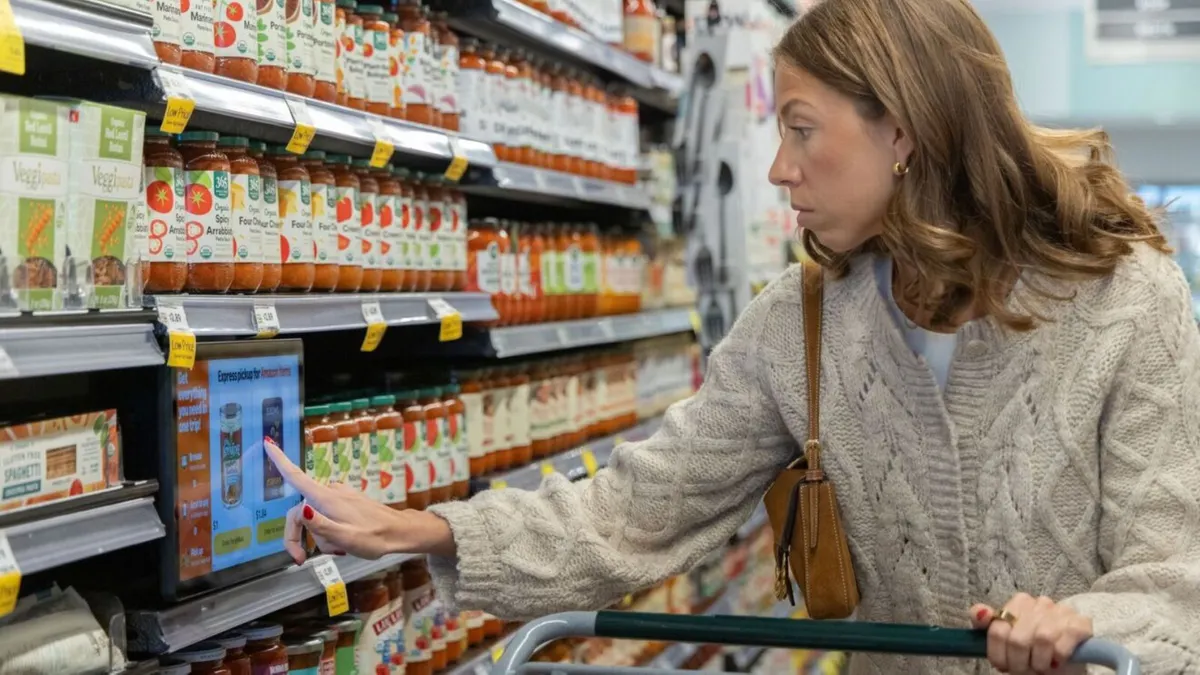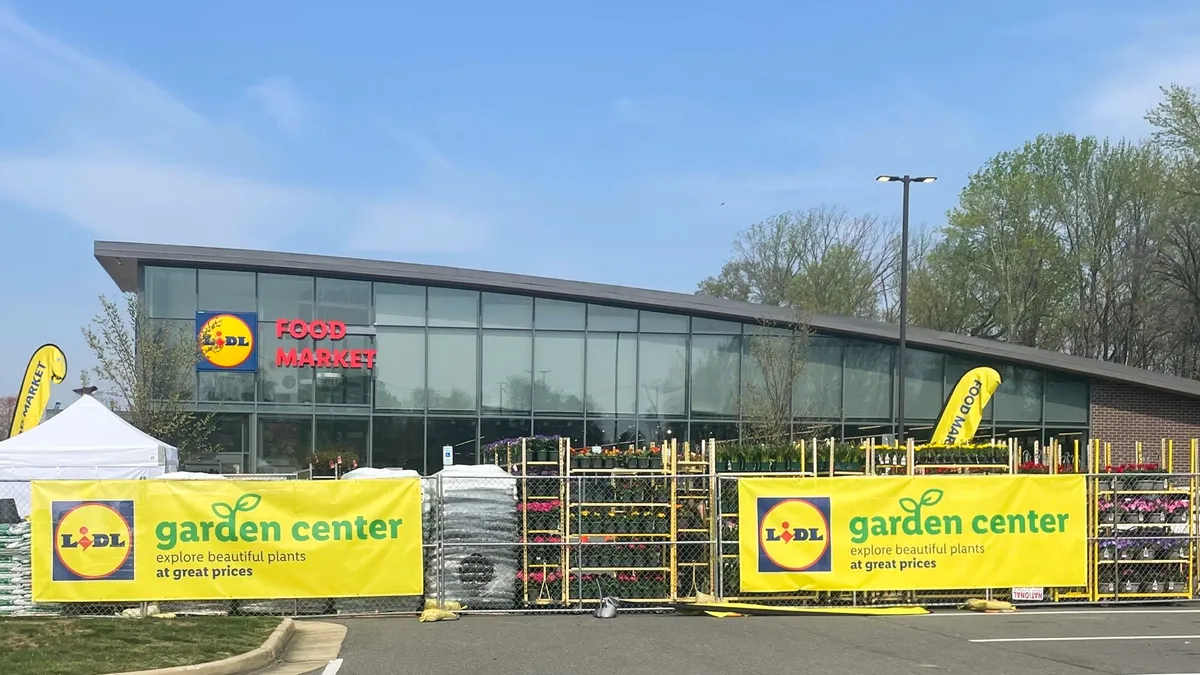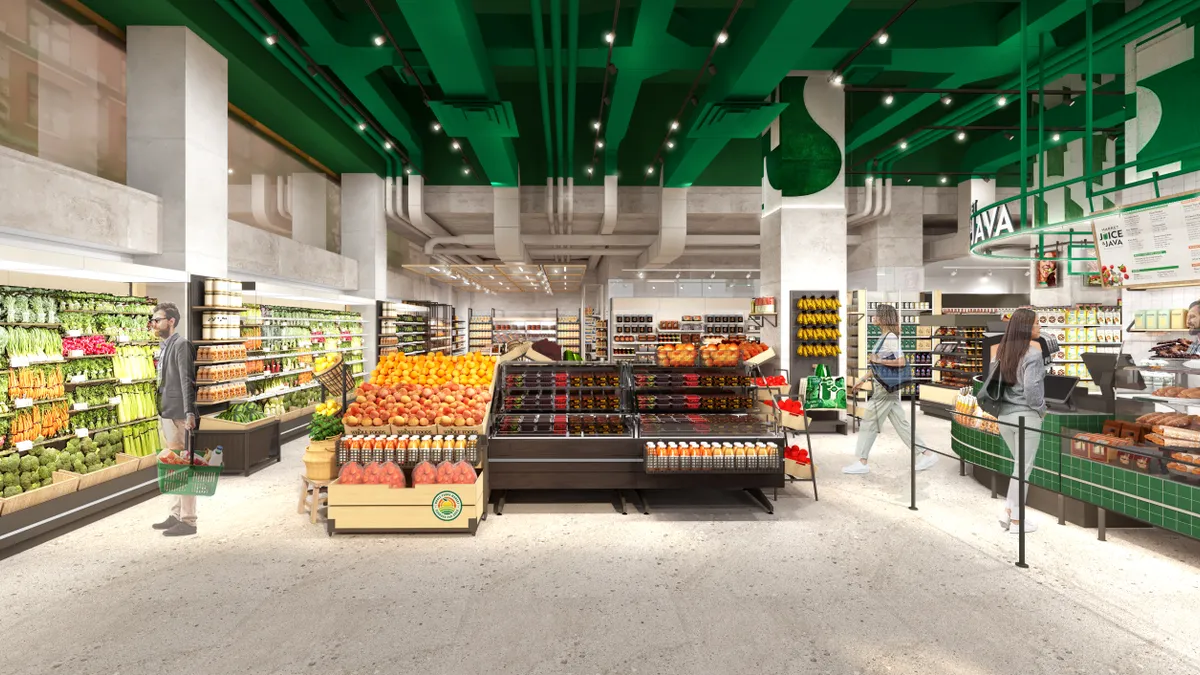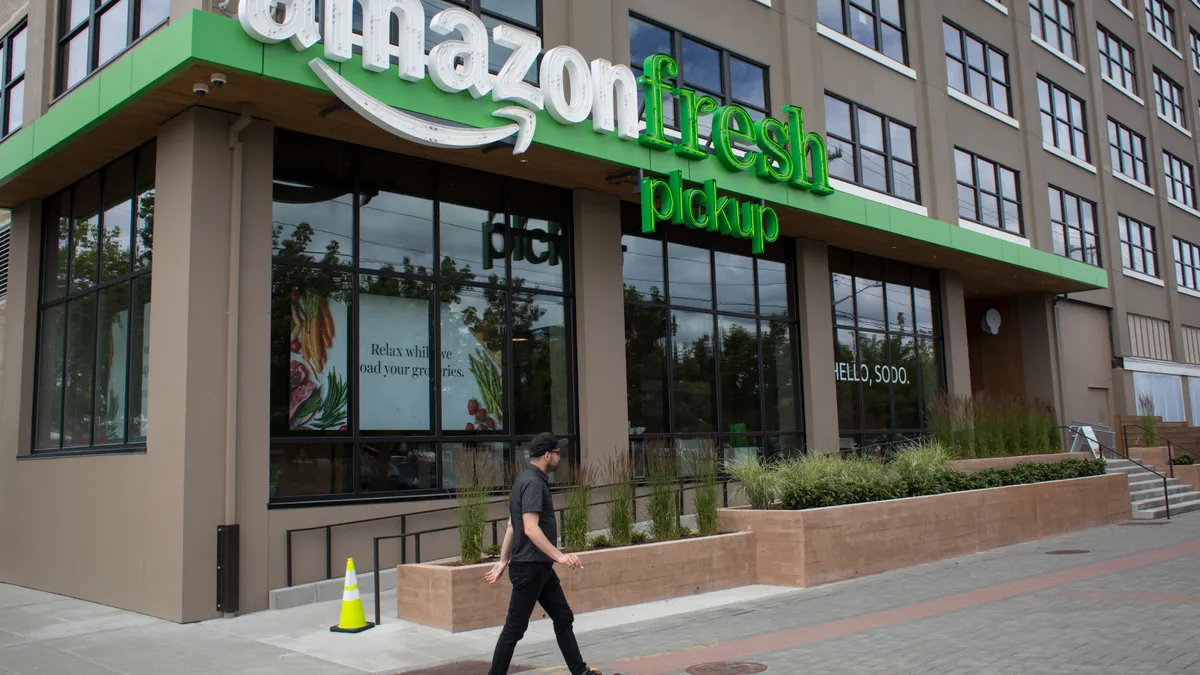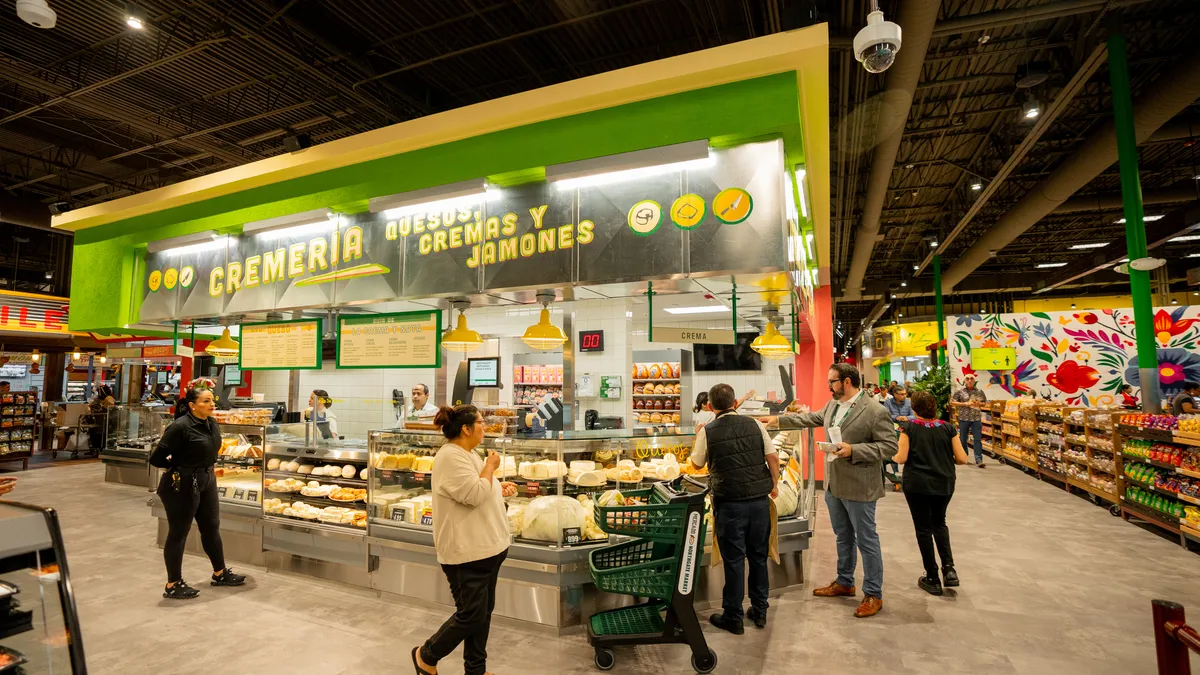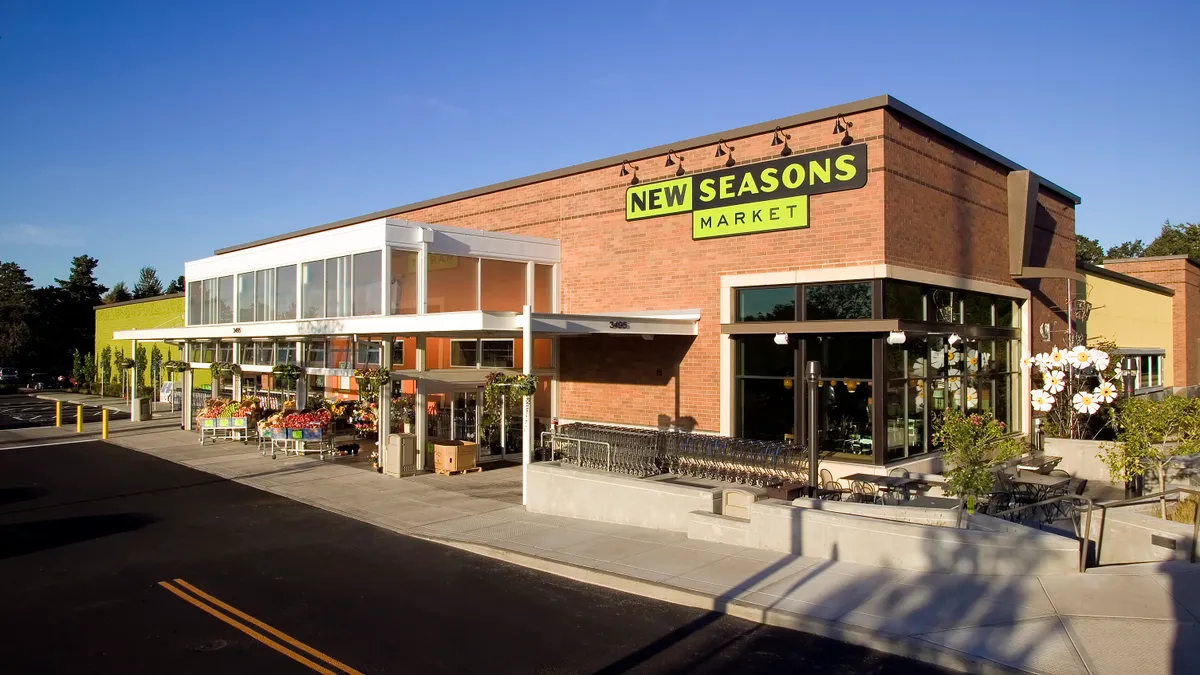ALEXANDRIA, Va. — A fully stocked candy aisle, checkout area, 13 TV screens for presentations, a U-shaped conference table and a wall with the latest statistics on confections and convenience stores — it's a portable research center packed inside an 18-wheel truck.
Nearly two dozen people gathered at the new tractor trailer Thursday just outside of Washington, D.C., to tour the truck and hear from executives of Hershey and the National Association of Convenience Stores about the center and the future of c-stores.
The black semi, adorned with Hershey candies such as Reese's, Kit Kat and its iconic chocolates, is the confectioners new Mobile Customer Insights Center (MCIC), a 53-foot tractor trailer unveiled this month. It's a slimmed-down version of Hershey's Global Customer Insights Center, which opened in 2006 in Hershey, Pennsylvania.
"We have now found that we have it fully subscribed, it's busy all year round," Todd Tillemans, Hershey's U.S. president, said of the global center. "So, the idea that the team came to me and said, what if we did this on wheels, we could actually reach more people. We can accelerate our reach."
Within nine months of the idea, the truck was up and running.
The truck, which plans to visit 25 locations across the country before the end of 2018, is stopping at Hershey's retail partners to provide insight into new consumer strategies for marketing and merchandising across different shopping channels. Hershey representatives said the truck will improve their relationships with convenience stores as shopper consumption habits change and a growing amount of purchases are made online.
"We have now found that we have it fully subscribed, it's busy all year round. So, the idea that the team came to me and said, what if we did this on wheels, we could actually reach more people. We can accelerate our reach."

Todd Tillemans
Hershey, U.S. president
Tillemans said Hershey and the NACS have been working together since the company was founded. Hershey today has a $1 billion c-store business, so the partnership is "very important" to them. In fact, the truck was specifically built for the convenience channel, he said.
"I hope when you come in here you go, this is an investment for the convenience channel and we want to partner and grow," he said. "Ninety percent of consumers are snacking more than once a day and there's a real convenience aspect to snacking."
Touring the center
Walking into the mobile center, retailers might be consumed by the overwhelming smell of chocolate — a signature scent for the company. Inside, there are several different displays of the latest Hershey products, with TVs displaying the brand’s latest insights and data.
Two experts will be at every stop working with retailers to teach new shopper strategies for marketing and merchandising. They gave a preview of what the tour would look like for retailers on the road this week.
When the experts walk retailers through the truck, they adjust the set up to cater to the individual convenience store. Each chain is given a presentation on how to optimize its confection aisle with mints in the top left and popular selling candies, such as Reese's, in their "strike zone," a term used for shelves that are at the eye level of the consumer. Afterward, they show additional presentations on optimizing the cashier space, food service, Hershey’s promotional calendar and the latest products before opening up the dialogue and checking out their convenience store.
Alexis Garber, one of the individuals who leads the presentation inside the truck, said retailers can tell Hershey “what’s keeping them up at night” when they visit and then the CPG can put more resources into addressing that issue. She said they plan to operate the truck for a minimum of 40 weeks, and they are starting to do two retailer visits a week. In Wisconsin, they parked in one store’s lot and spent the day with its employees.
"They had their home field advantage ... so just the level of engagement was really high," Garber said. "We got to learn a lot more about that, which is I think really unique and different than what we get to do in our neck of the woods."
Addressing the challenges
Hershey's experts and the mobile insight center are heavily focusing on research to help address concerns in the industry. One of the biggest is the increasing popularity of e-commerce services with consumers. Retailers have been strategizing ways to benefit from digital domination. Hershey has invested heavily in its e-commerce strategy this year.
Kantar Retail estimates e-commerce today comprises just 2% of grocery sales, meaning there is plenty of room left for growth. It’s expected that 20% of all grocery sales, representing around $100 billion, will come from online shoppers by 2022, with 70% of shoppers purchasing some of their groceries on the web, according to data from the Food Marketing Institute and Nielsen.
The challenge for many food and beverage manufacturers is figuring out how to adjust their business model for online growth without losing track of the core store sales model.
"There's benefits to digital that you can elongate that relationship. You can remind people. You can drive loyalty. And so, we see it as an opportunity," Tillemans said. "Those who look at it just as a threat are only seeing one part of it, but we also come back to the underlying fundamental consumer behavior, which is more snacking and the impulsivity of this category, which is see candy, buy candy, eat candy — those consumer dynamics don't change."
Joe Sheetz, CEO of convenience store and coffee shop chain Sheetz and the chairman of NACS, said e-commerce has affected other retailers "a lot more than us" because in e-commerce, "you can't get something in a minute" like you do at a c-store. But he said candy needs to keep changing products to keep up with consumer demands and stay ahead.
"We're also one of the last bastions of, at this point, successful bricks and mortar," Sheetz said. "We have to be a relevant brick and mortar because there's a lot of irrelevant bricks and mortars out there right now."





